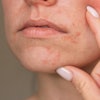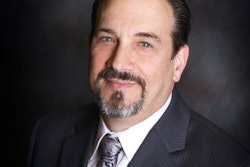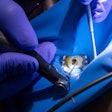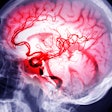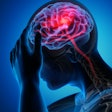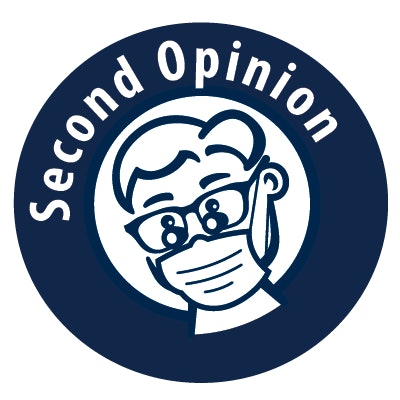
Dentistry is very much like baseball. The industry progresses very slowly and is quite obsessed with statistics. In my previous DrBiscuspid.com column, I focused on the incidence and mortality statistics associated with oral cancer.
I'm commenting this time, again as an educated consumer, on another pervasive oral health concern -- periodontal disease and how it relates to systemic health. How pervasive is periodontal disease? I'm sure you've seen these statistics provided by the U.S. Centers for Disease Control and Prevention in the 2012 study in the Journal of Dental Research, titled "Prevalence of periodontitis in adults in the United States: 2009 and 2010" (October 2012, Vol. 91:10, pp. 914-920):
 Michael Ventriello is the owner of Ventriello Communications.
Michael Ventriello is the owner of Ventriello Communications.- An estimated 47.2% or 64.7 million American adults have mild, moderate, or severe periodontitis.
- In adults 65 and older, prevalence rates increase to 70.1%.
The periodontal disease epidemic is also global in scope. In fact, the European Federation of Periodontology has published a "manifesto" that was prefaced by this statement:
Periodontal disease should be acknowledged as a major public health issue, that all dental and medical professionals should be provided with relevant treatment guidelines, and that recommendations be given for future research to help clarify these associations and their consequences in terms of primary prevention.
The upside of an epidemic
If the cloud of periodontal disease epidemic has a silver lining, it may be that it has the strongest potential for reconnecting the disciplines of medicine and dentistry or reconnecting the mouth with the rest of the body.
Undiagnosed and untreated periodontal disease is obviously a big deal. It's also an opportunity for dental clinicians to have major impact on improving a patient's oral health, preserving their dentition, and increasing their life spans, as well as the quality of those additional years.
The more we learn about periodontal disease and the impact it has on the rest of our bodies, the more patients need to be told that a little pink in the sink is not a trivial matter and that bleeding gums is not a mere inconvenience like dandruff or earwax.
“A greater sense of urgency is needed for addressing the cause of bleeding gums.”
In fact, when Jim Hyland, DDS, CEO of OraVital lectures, he often explains that if you visited your physician with a blood trickling out of your ear and were told, "Let's check it again in six months," you would find a new physician as soon as possible.
Obviously, a greater sense of urgency is needed for addressing the cause of bleeding gums.
Yet, despite the research linking periodontal disease to low birth weight, diabetes, rheumatoid arthritis, Alzheimer's disease, and other medical conditions, the dental profession seems slow to move on taking ownership of its half of the oral-systemic connection or, perhaps more accurately, the perio-systemic connection and taking a more prominent position on the front lines of healthcare.
4 reasons why
Why is this? The following are my personal observations.
1. Not taught in dental or medical school
Many practicing dentists and hygienists did not learn about the oral-systemic health link in school as there is still a great divide between dental and medical school curriculums. But wait, it's not better in medical school. My friend, Charles Whitney, MD, a strong advocate for dental-medical collaboration says the extent of his medical school training on the oral cavity was about one hour.
The result is patients are caught in the middle of this oral-systemic inertia, and their total health is put at risk.
However, much research has been published since dental and medical clinicians have graduated and is readily available. What's more, there is a wealth of free continuing courses, webinars, and articles to help clinicians keep abreast of the latest oral-systemic link developments.
2. Lack of communication
There is a lack of communication and collaboration between the medical and dental communities. Unfortunately, it may be up to the dental profession to initiate bridging the gap between oral healthcare and medicine. This won't happen overnight, but a concerted effort must be made on the individual, association, and education levels.
3. Lack of confidence
There is a lack of confidence among some dental professionals in explaining oral-systemic risks to their patients and their medical colleagues lest they be accused of playing doctor or acting beyond their scope of practice.
This self-doubt must be overcome. Armed with the latest research studies and lab analysis data provided by in-office use salivary DNA testing, dental clinicians can make a strong case for the medical necessity of periodontal treatment and the positive impact it can have on pre-existing or hereditary medical conditions.
4. Patient resistance
Patients are resistant to periodontal disease treatment, because it is not covered by insurance.
There has been some progress on this front with the 2017 adoption of CDT 4346, which attributes a specific insurance code for gingivitis treatment. You should read my friend Patti DiGangi's book, A Gingivitis Code Finally!
The importance and urgency of investing in a patient's health by accepting periodontal disease treatment must be explained with confidence.
The tipping point
If you've been on the fence about incorporating a zero bleeding on probing policy and a mouth-body connection awareness program in your practice, now is the time to jump off the fence and into the oral-systemic health movement.
In 2016, three researchers published a peer-reviewed study in the Postgraduate Medical Journal, titled "High-risk periodontal pathogens contribute to the pathogenesis of atherosclerosis" (November 29, 2016). In a nutshell, the authors wrote, "Periodontal disease due to high risk pathogens must be considered a contributory cause of arterial disease."
For a dental practitioner looking for a medical necessity to convince an uninsured patient to accept a treatment plan, this is manna from heaven. I have yet to see research that states the link between periodontal disease and a medical condition as strongly as this one.
It should be noted that atherosclerosis is the largest cause of death and disability in North America. If patients have a history of cardiovascular disease and present with bleeding gums, dentists and hygienist have an immense responsibility and opportunity to help reduce their risk of heart attack and stroke.
The authors also noted that periodontal disease is a medical condition with a dental solution, and several DNA-based oral pathogen tests are available to assess high-risk pathogens.
If you've been wondering when the medical community is going to finally recognize the contributions that dental clinicians make regarding the overall health of their common patients, consider this statement from the authors of that study:
"The dental community has a substantial opportunity to mitigate the number one cause of morbidity and mortality, namely cardiovascular disease, by elucidating feasible effective management of periodontal disease due to high-risk pathogens."
I believe most patients would appreciate getting a heads-up from their dentists and hygienists regarding an infection brewing in their mouths and what it could mean to their oral and overall health. If fact, with all the mainstream media attention being given to the mouth-body connection, your patients may now expect it.
What are you waiting for? Isn't it time to doctor up on oral-systemic health or perhaps more specifically, the perio-cardio connection?
Michael Ventriello is the owner of Ventriello Communications and has been specializing in dental industry public relations and marketing communications for more than a decade. During this time he has worked with several companies in the periodontal disease and oral-systemic categories including as OraVital, the American Academy of Periodontology, OralDNA Labs, Arestin, 3rd Era Dentistry, and others. Contact him at [email protected].The comments and observations expressed herein do not necessarily reflect the opinions of DrBicuspid.com, nor should they be construed as an endorsement or admonishment of any particular idea, vendor, or organization.


